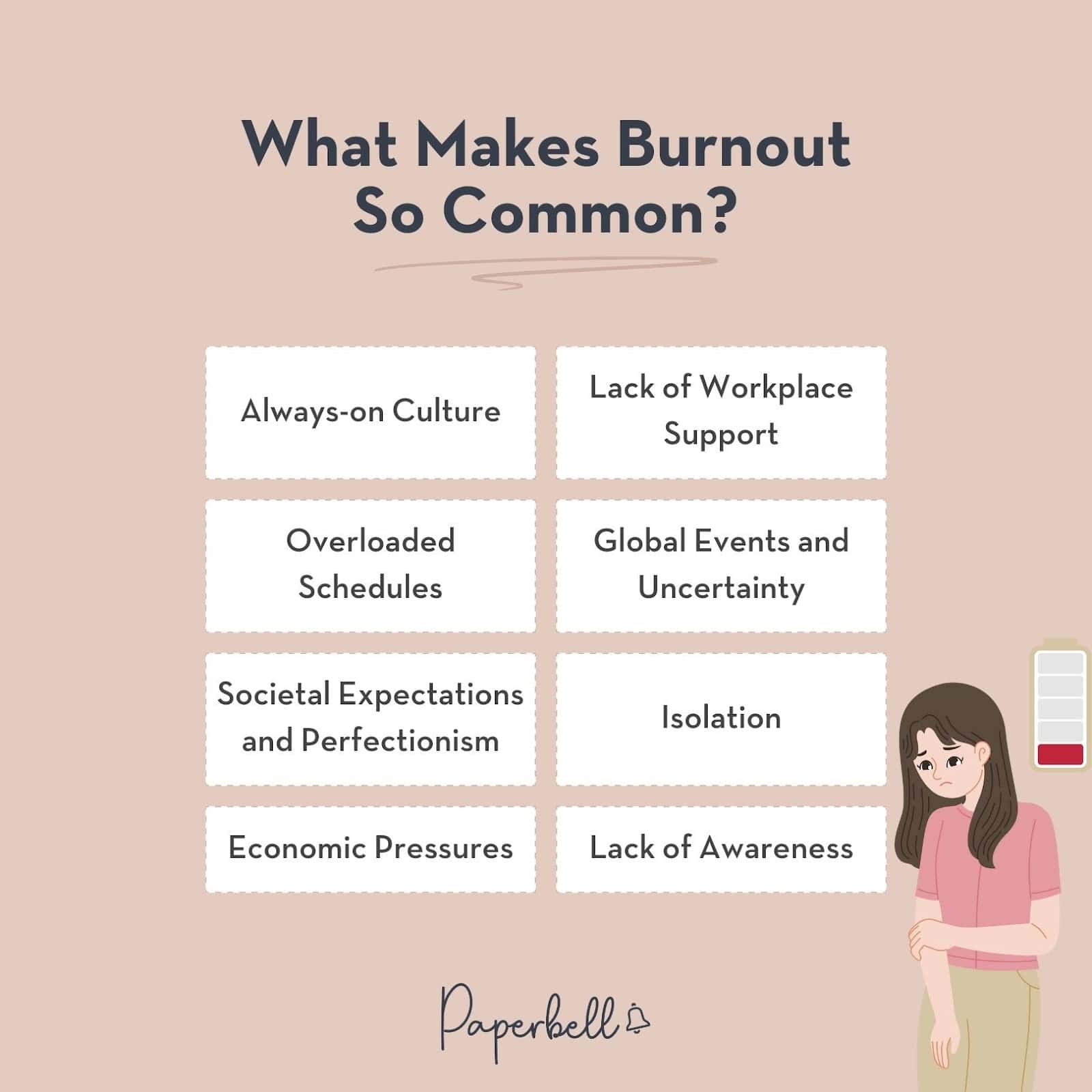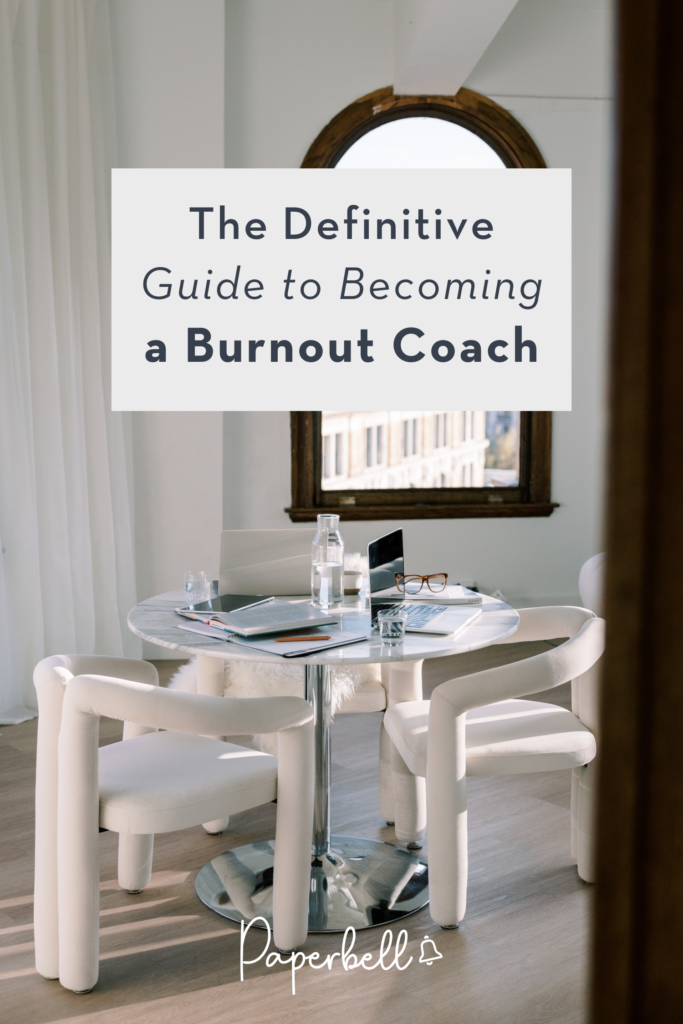Burnout is one of the silent epidemics of the modern world affecting millions of people worldwide. SHRM’s most recent Employee Mental Health research revealed that 44% of American employees feel burned out at work, 45% feel emotionally drained, and 51% feel “used up” at the end of the day.
But it’s more than just our work that depletes our energy: Our always-on culture has increased our screen time to a chronic level and set unrealistic expectations to constantly perform and achieve at the expense of our well-being.
Burnout coaches help fight this trend by guiding their clients toward a healthier relationship to work and a balanced life. Interested in becoming one? Read on to learn more about this much-needed coaching niche.
What Is a Burnout Coach?
A burnout coach is a professional who helps individuals recognize, address, and recover from the physical and emotional exhaustion caused by prolonged stress.
They create personalized plans to help clients identify what’s causing them burnout, develop healthier coping mechanisms, and build sustainable habits for their long-term well-being.
Some of the strategies burnout recovery coaches use are:
- Assessing lifestyle factors: Pinpointing habits, work environments, or relationships that contribute to burnout.
- Teaching coping strategies: Educating clients on mindfulness, time management, setting boundaries, and other strategies that combat burnout.
- Creating sustainable action plans: Helping clients set more realistic goals and implement gradual changes to prioritize mental and physical health.
Burnout looks different for everyone so by offering personalized support, burnout coaches can get to the root of what’s tipping the balance in their client’s life.
What Makes Burnout So Common?
Beyond everyday stress at work, several other aspects of our daily lives can make us feel worn out. Here are some that show why mindset changes and reframing techniques are so key when coaching clients on burnout.
1. Always-on Culture
Relying on a screen for our daily chores, communication, and entertainment blurs the boundaries between work and personal life. Prolonged screen time can disrupt our sleep, trap us in chronic fatigue, and disconnect us from real-life experiences.
Additionally, the constant flow of notifications and the pressure to respond quickly to emails and messages can increase our anxiety levels and make it difficult to unplug.
2. Overloaded Schedules
Many people juggle multiple responsibilities, from demanding careers to caregiving, social obligations, and personal aspirations. Women are especially prone to extreme burnout as they tend to handle most of the invisible work in society, including parenting and household chores. This constant multitasking creates pressure and reduces opportunities for rest.
3. Societal Expectations and Perfectionism
Cultural narratives around hustle, ambition, and achieving “success” often push people to overwork. Perfectionism exacerbates this, as many struggle to meet unrealistic standards in their careers and lifestyles.
4. Economic Pressures
The rising cost of living and job insecurity force many to work longer hours or take on multiple jobs. This leaves little time for recovery, activities we find enjoyable, and dedicating quality time to loved ones. Even if we pick up a hobby, a capitalistic frame of thinking often pressures us to monetize it, turning it into more work instead of a creative outlet.
5. Lack of Workplace Support
Some organizations fail to provide adequate resources, fair workloads, or supportive environments. Toxic workplace cultures and poor management further contribute to feelings of frustration and exhaustion.
6. Global Events and Uncertainty
Major global issues like pandemics, climate change, and geopolitical instability create stress on top of our personal problems. We are more exposed to information about what’s happening around the world than ever before, whether these events affect us directly or not.
Anxiety about these collective issues can take an even bigger toll on someone who’s already battling burnout.
7. Isolation
A busy schedule and digital interactions over face-to-face connections can make us feel disconnected, which, in turn, can affect our mental and physical health. Some experts say that loneliness can pose a health risk nearly as severe as smoking a pack of cigarettes a day.
Many people who deal with burnout experience isolation and a lack of social support, making it harder to cope with its challenges.
8. Lack of Awareness
Although awareness of mental health has grown overall, many still struggle to seek help because of the stigma that surrounds it. Most people aren’t taught growing up how to manage stress and set boundaries so they struggle to recognize and address burnout early.

The Impact You Can Create as a Burnout Coach
Burnout has been so normalized in today’s work culture that many aren’t even aware that a life without chronic stress is available to them. As a coach, you can help people develop a healthier relationship with work, greater emotional balance, and an increased quality of life.
Managing burnout can ripple out into various areas of a person’s life. Some of these benefits include:
- Improved mental clarity: By reducing overwhelm, clients can think more clearly and make better decisions.
- Enhanced work-life balance: Coaches help clients set boundaries and prioritize self-care.
- Increased productivity: Reclaiming energy and focus enables clients to function better at work and in their personal lives.
- Stronger professional and personal relationships: Clients learn to communicate their needs and foster healthier connections.
- Long-term resilience: Burnout coaching provides tools for proactively managing stress and preventing future relapses.
How to Become a Burnout Coach
Are you passionate about helping others overcome stress and reclaim balance in their lives? Here’s how you can turn burnout coaching into a rewarding career.
1. Get Specialized Training
To be effective as a burnout coach, you’ll need a combination of foundational coaching skills and knowledge about stress management, workplace dynamics, and mental well-being.
Foundational certification programs in the coaching space will teach you how to use powerful questions, active listening skills, and accountability systems. Those specialized in burnout coaching or a closely related field will also train you on how to tackle the specific problems clients face in this niche.

Some examples include:
- The Certified Burnout Coach Course by Balanceology
- Resilience Coaching for Stress and Burnout by The Institute for Life Coach Training.
You can also expand your expertise with programs related to:
- Stress and resilience training
- Mindfulness-Based Stress Reduction (MBSR)
- Cognitive behavioral techniques (CBT)
2. Start Your Coaching Practice
To attract clients as a burnout prevention coach, you’ll need to set up a business with specialized services. Here’s how:
- Define your niche: Do want to work with corporate employees, entrepreneurs, healthcare workers, or parents? A clear target audience will help you position yourself well in the coaching space.
- Create coaching packages: Outline the structure of your services, such as what they include, your fees, the duration of your coaching process, and the outcomes clients will achieve with them.
- Set up your business: Paperbell can automatically create a beautiful website for your packages with scheduling, payments, contracts, and client communication plugged into it.
3. Attract Your First Clients
Here are some ways you can build a solid client base as a new coach:
- Offer free or low-cost coaching sessions: You can open up a limited number of free or discounted spots in your new coaching packages to beta-test them and collect testimonials.
- Leverage your network: Reach out to friends, family, and colleagues who may know someone in need of burnout prevention. Share your mission and ask for referrals.
- Host workshops and webinars: Organize events on topics like “How to Avoid Burnout” or “Stress Management for Professionals.” These can establish you as an expert and funnel attendees into your coaching programs.
- Market your services: Promote your packages to an audience who may struggle with burnout through content strategies, ads, lead magnets, or partnerships with relevant platforms.
4. Measure Your Coaching Impact
As you begin working with clients, track their progress and collect testimonials. Here are a few ways to measure impact:
- Use stress assessments to evaluate improvements in your client’s mental well-being.
- Encourage clients to reflect on measurable changes, such as better work-life balance, improved sleep, or increased energy levels.
- Document success stories to use as anonymous case studies in your marketing materials.
Focusing on results and showcasing your clients’ transformations will help you build credibility and attract new clients.
FAQ
Do I Need Certification to Become a Burnout Coach?
Certification isn’t mandatory to become a burnout coach, but it’s highly recommended to get trained on evidence-based practices and core coaching competencies to serve your clients effectively.
How Much Do Burnout Coaches Make?
Hourly session rates vary greatly for coaches, from $50 to $300 depending on your expertise and target audience. Corporate coaching and high-end packages can significantly increase your earnings.
How Do I Find My First Clients?
Connect with your network to offer support or referrals. Provide free intro sessions to build experience, showcase your coaching, and collect testimonials. Host free webinars or collaborate with burnout-focused podcasts to attract interest in your coaching packages.
Start Making a Difference
Burnout coaching can make a real difference in the corporate world and beyond. If you want to make sure your coaching practice is focused and effective, it’s important you keep it organized.
Paperbell can help you set up your packages, coaching website, as well as your booking and payment systems in a few clicks. It also automates your client onboarding flow and communication so you can focus your energy on helping people.
Try Paperbell for free with your first client.










